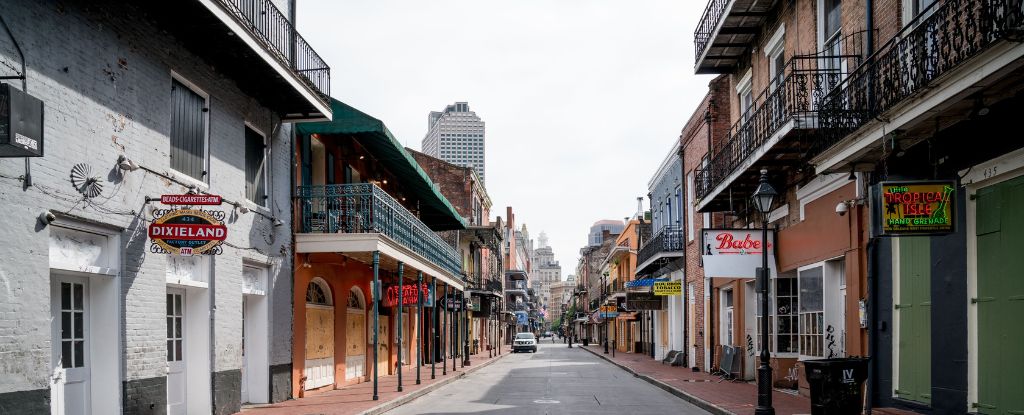In 2100, our world will likely look drastically different to what it does today, either reshaped by natural forces driven by climate change or by humans saving their own skin. Our cities could look totally different too – and some might be shadows of their former selves.
A new study has run the numbers and found that by the end of the century, almost half of the nearly 30,000 cities in the US will face some sort of population decline, losing between 12 to 23 percent of their resident population.
According to the analysis, these future cities are more likely to resemble fractured, thinning, or sprawling communities than total ghost towns, as populations shift within and between cities. That is, unless local governments and town planners can respond and adapt to the changing needs of their residents.
“The implications of this massive decline in population will bring unprecedented challenges, possibly leading to disruptions in basic services like transit, clean water, electricity and internet access” as cities shrink and populations age, the researchers warn.
Population decline in certain neighborhoods may lead to grocery stores shutting their doors, leading to food deserts. Neglected infrastructure in dwindling towns could also leave communities without clean water, like what happened in Jackson, Mississippi, in 2021.
Those potential impacts of declining cities reach far beyond what Uttara Sutradhar, a graduate student in civil engineering at the University of Illinois at Chicago, and two colleagues, Lauryn Spearing and Sybil Derrible, initially set out to study: the transportation challenges that cities in just one state, Illinois, could face as their populations change over time.
Intrigued by their results, Sutradhar and colleagues expanded their analysis to include all 50 states, basing their projections on population trends from US census data from three time periods over 20 years, and two datasets incorporating five possible future climate scenarios.
And their view wasn’t limited to America’s largest cities. The researchers defined cities as the US Census Bureau does: as agglomerations of people in places that we might commonly refer to as boroughs, villages, and towns, as well as major metropolises.
“Most studies have focused on big cities, but that doesn’t give us an estimation of the scale of the problem,” Sutradhar told Rachel Nuwer at Scientific American.
Currently, 43 percent of US cities are losing residents, a figure that the analysis projects will rise as the century marches on. Depending on the climate scenario modeled, up to 64 percent of cities could be in decline by 2100, the researchers found.
The Northeast and Midwest regions will likely see the most depopulating cities. Texas and Utah, although growing now, will also see a fair share of their cities going through population loss by 2100.
However, estimates of population trends decades into the future are inherently uncertain, and the analysis doesn’t explore economic or social factors driving the projected trends.
Neither does it include migration within the US – when climate change is already forcing populations to move as places become less habitable, with extreme heat or repeated flooding.
Those complexities aside, “what is certain is that an important cultural shift in planning and engineering communities is needed, away from conventional, growth-based planning, to accommodate a dramatic demographic shift,” the researchers conclude.
Research suggests that globally, octogenarians could outnumber under 5s by two to one by the century’s end. An estimated 183 out of 195 recognized countries might have also slipped into population retrograde, with fertility rates declining lower than replacement rates.
But each city will be on its own trajectory, weathering its own climatic and population changes, so local planning is needed.
The study has been published in Nature Cities.





